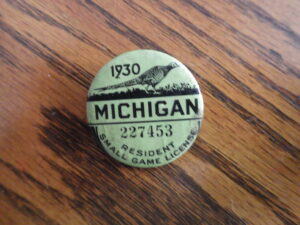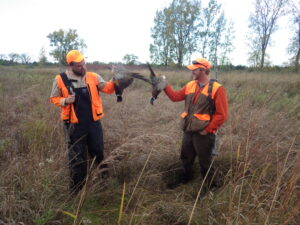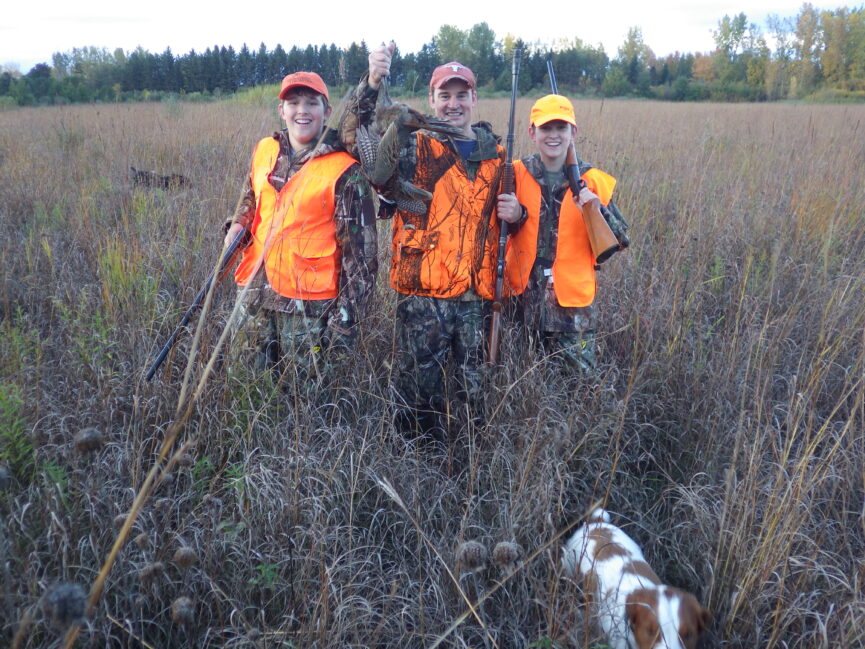
The annual opening of Michigan’s pheasant season on October 20th is a revered day for me, and has been since I was a kid. My first memories of hunting are of being in the fields of our farm with visiting pheasant hunters and their bird dogs. There were the sounds of dog whistles, shouts, cackling roosters rising and gunfire followed by the pungent scent of burnt gunpowder in the crisp autumn air. Yep, folks, to say this great outdoor experience is deeply engrained into my being to this day is an understatement.
I feel blessed to have witnessed some of the heyday of Michigan’s legendary pheasant hunting and when schools in my Thumb area used to be closed for opening day. It was also an annual boon to local businesses when visiting pheasant hunters needed their services. Due to the popularity of pheasant hunting in those days, Michigan small game hunter numbers were far greater than those of deer hunters, but that has all changed. I was able to also witness the dramatic change in farming techniques, including the advent of high-tech herbicides and insecticides, which understandably came about to meet modern demands in a fast-ever-changing world, but this would in turn also have a dramatic effect on preferred pheasant habitat and pheasant numbers in Michigan would plummet. In my memory, it seemed to happen almost overnight.
With the almost suddenly lowering of bird numbers so was there an identical lowering number of pheasant hunters, and much to my dismay Thumb area schools were eventually no longer closed on that revered pheasant season opening day. Of course, I had to play hooky, if required, on October 20th, because when it came to local pheasant hunting, I was thoroughly smitten and have never given up on it. If you had the determination and a good dog, pheasants could still be found, and harvesting surplus roosters has never been a detriment to the specie.
Thanks to various government programs which turned intensively worked farmlands into grasslands, I saw an immediate response from wild pheasants and their numbers increased, and there has been some resurgence in local pheasant hunting, much to my delight. Just the same, this isn’t a widespread affair, because the proper pheasant habitat is no longer widespread. It is literally pockets of cover, and I have long referred to wild Michigan pheasants as being “pocket-birds”, and they are not easy to hunt by any means.
I firmly believe Michigan’s wild pheasant today, due to the pocket-type cover, has been genetically engineered through hunting. Roosters which made mistakes such as flushing instead of running when dealing with hunters often went into the bag and weren’t around to pass their genes on. Over the years, I’ve seen a steady progression in the evasive tactics of wild birds and the roosters I hunt today are quite a bit different than those I hunted as a kid. They instinctively prefer to run rather than fly more than ever before, only flush as a last resort, and roosters now will also rarely cackle when flushed by hunters. In a “roosters only” hunting atmosphere, the cacklers readily announce their sex, making proper identity far easier and quicker, and the cacklers often ended up not passing on their genes as well.

When I was a kid, you could often bag roosters without the assistance of a dog but to pursue today’s wild roosters without a dog, to me, it is like trying to climb a ladder without rungs. A good bird dog in my opinion is an important part of the equation and some pheasant hunters prefer dogs which flush and others prefer the pointing breeds. Personally, I prefer to use both types, working together as a team. It is a technique I learned from visiting hunters when I was a kid, who originated from southern states and moved north to work in the auto industry and relates to how quail are often hunted “down south”. It certainly works on pheasants as well, and today’s wild roosters rarely, if ever, hold for a point, and having flushing dogs in the mix truly ups the ante.
Pheasants are tough and tenacious game birds which can take a pounding from birdshot and keep ticking, and why I want dogs along to not only to locate and flush birds, but to also recover downed birds. I’ve seen plenty of roosters which appeared to be pole-axed in the air by a shot, only to hit the ground running. My preferred shot sizes are (lead) number sixes, fives or fours, with my favorite being number fives because it fits right in between the other two shot sizes and works for me.
I use a variety of shotguns for pheasant hunting but one of my favorites is a double barrel (with two triggers) 16 ga that is choked modified and improved modified, which I stoke with Fiocchi “Golden Pheasant” nickel-plated number fives. Despite all the glitz and glamor surrounding the other shotgun bores, such as 12 ga and 20 ga, the 16 ga, to me, has pheasant hunting written all over it. Improved cylinder or modified chokes readily accomplish the task using today’s wonderful selection of ammunition for fast flying pheasants and do so by offering more forgiving patterns which can still reach out to reasonable ranges.
Last year’s opening morning offered ideal hunting conditions, and I knew the birds were there. However, with standing cornfields bordering the cover to offer a ready and safe sanctuary, I knew the birds would vacate the tall prairie grass in short order. Today’s wild rooster pheasants seem to instinctively know where to head when hunting pressure arrives and it pays to have a hunting strategy, often with blockers placed at key locations, or performing a pincer (aka “hammer and anvil”) technique. Simply moving hunters as a straight and uniform line in one direction, such as what was done in the old days, only herds (literally) the birds to the nearest exits. My group’s hunting dogs all worked splendidly together with plenty of pheasants being flushed, although not always in range, as often can be the case when the birds realize a melee has commenced, and roosters were both downed and missed. It was a great time for all, dogs included!
Yep, Folks, I’m presently in the countdown mode for October 20 to finally get here. It is something I have been doing since my very first introduction to pheasant hunting, many years ago.
- Walking on top of the snow is a lot easier than wading through it - January 5, 2026
- Fickle weather during December deer hunting adventures - December 3, 2025
- Michigan’s most popular opening day – November 15th - November 23, 2025

